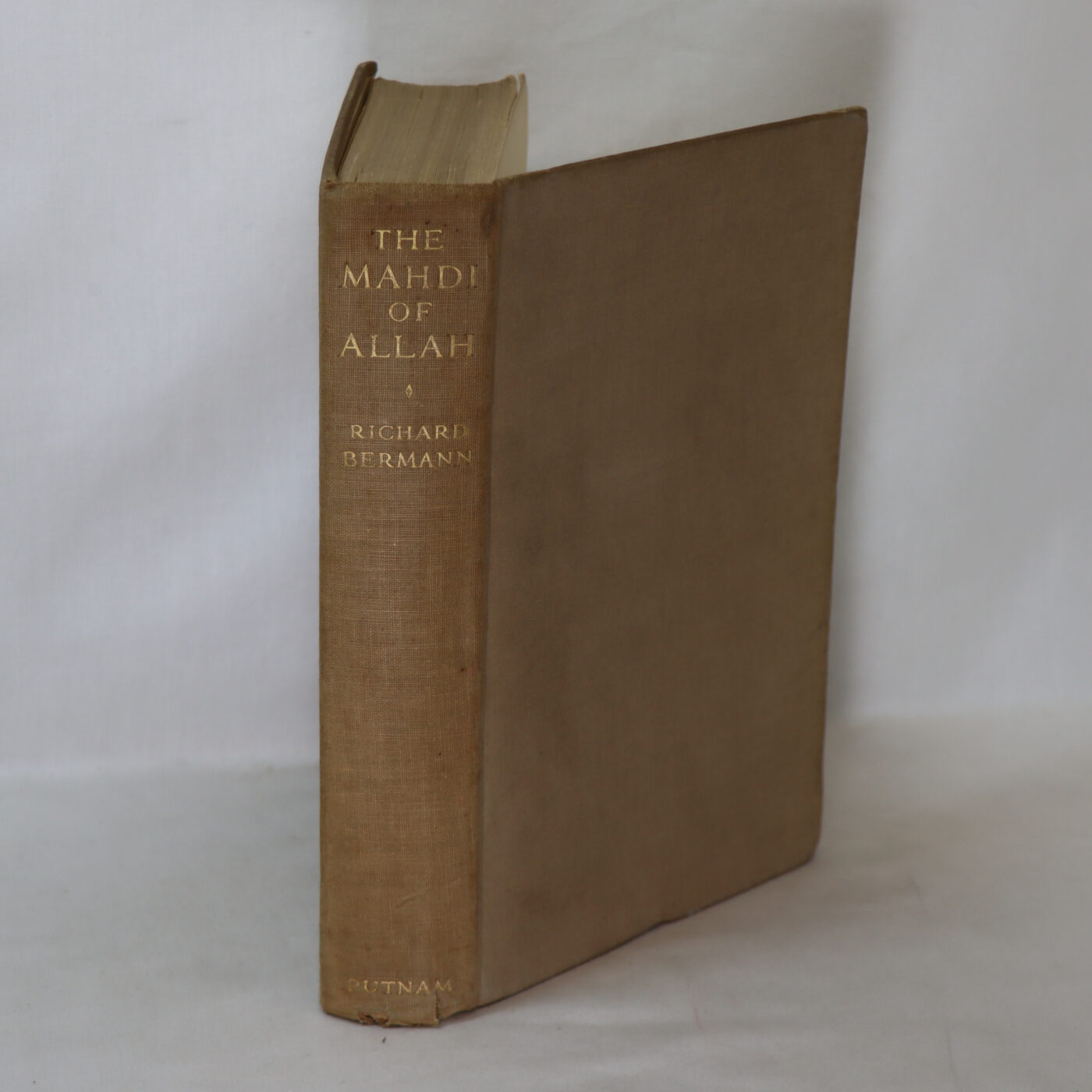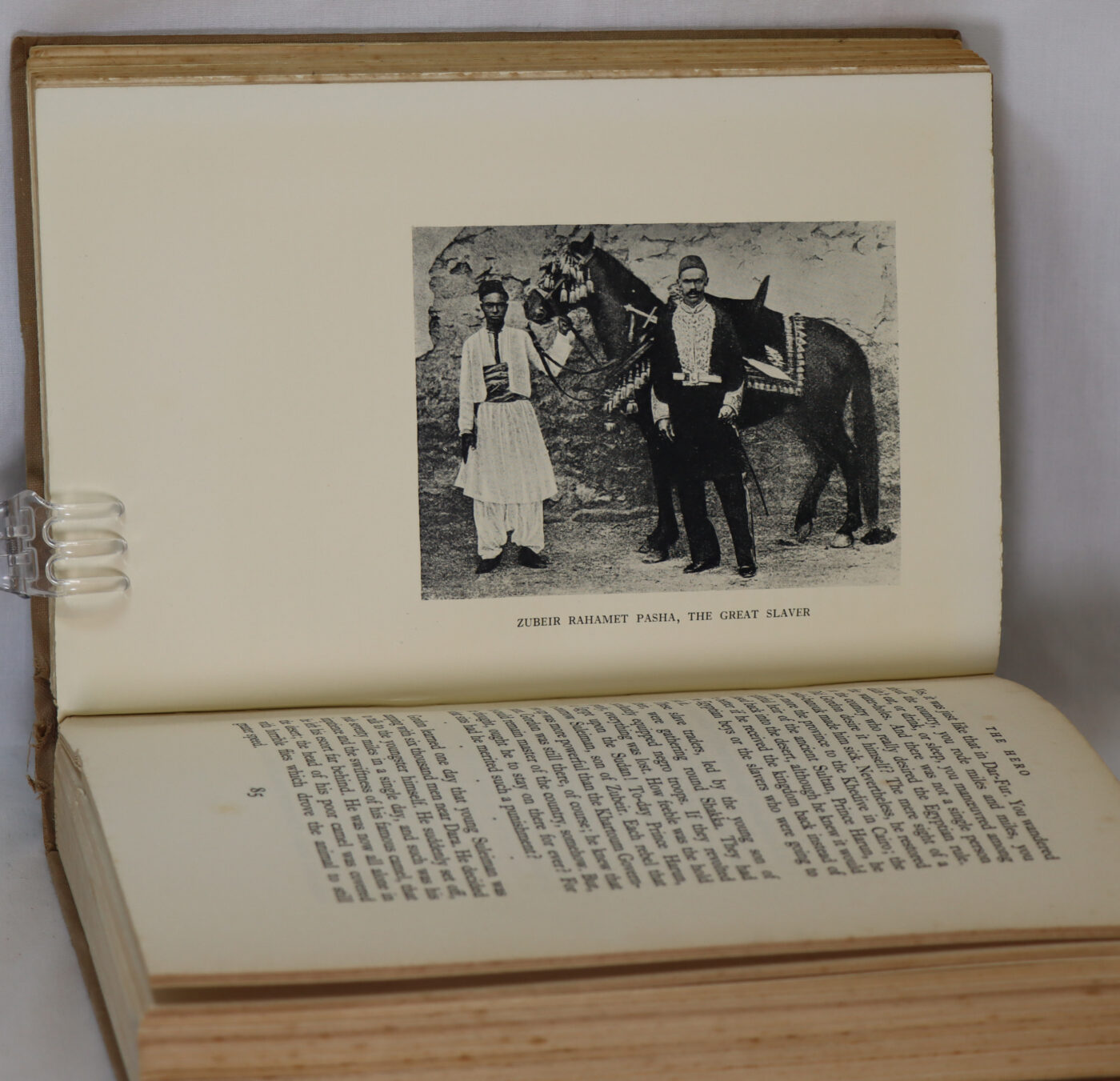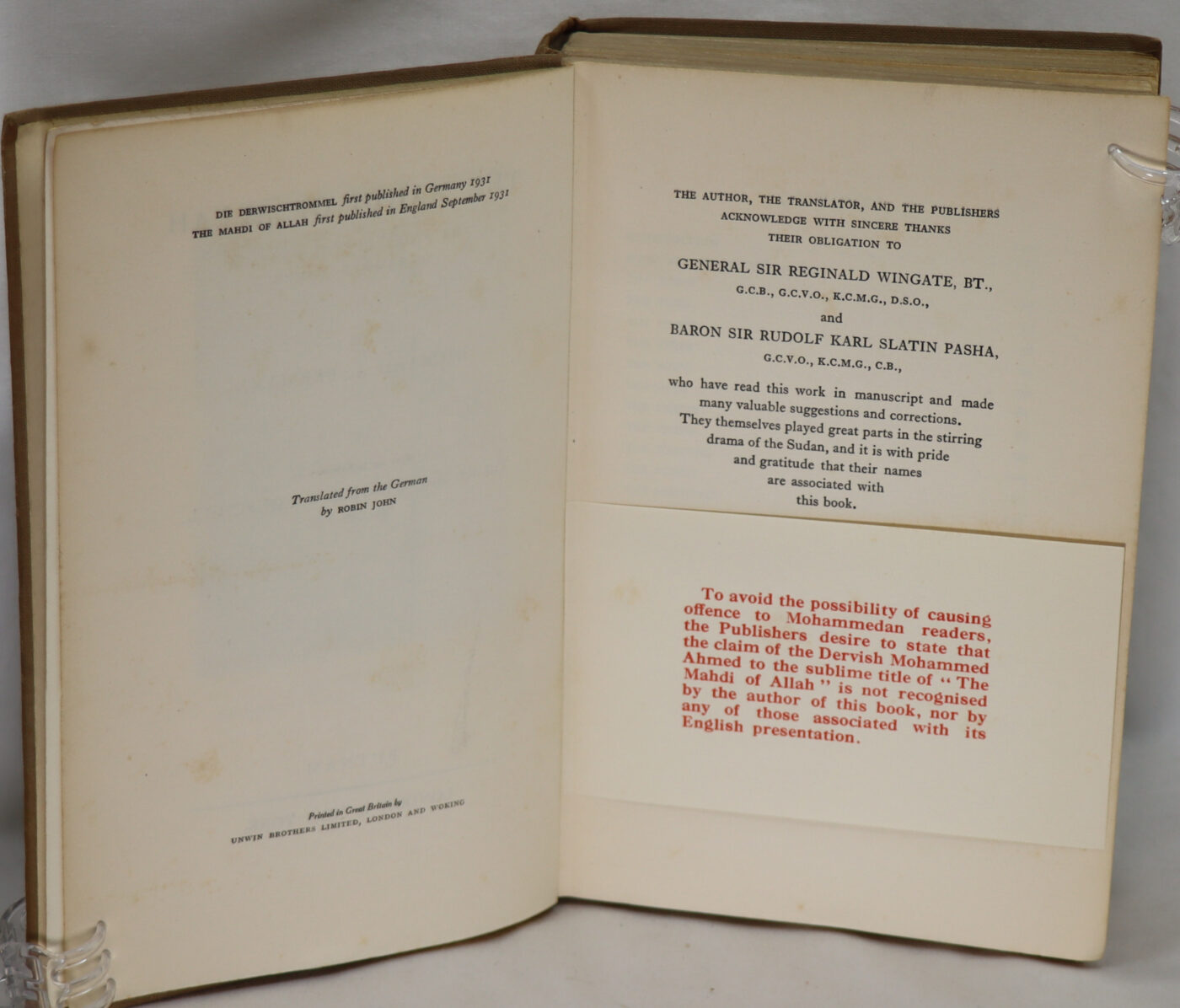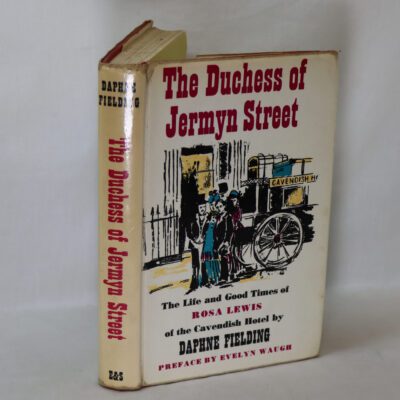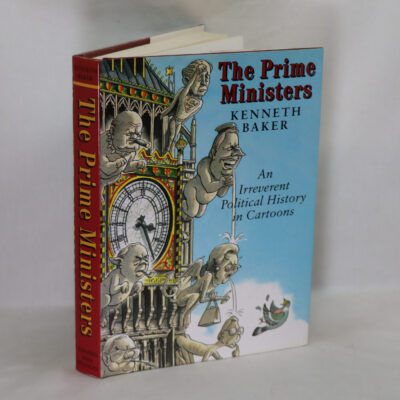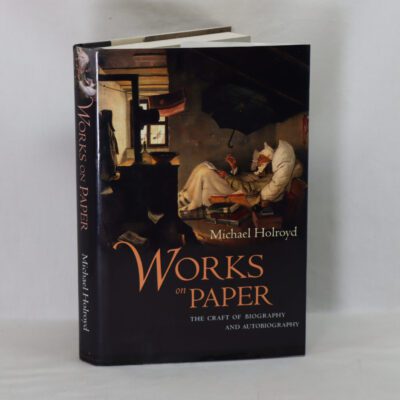The Mahdi of Allah.
By Richard A Bermann
Printed: 1931
Publisher: Purnam. London
| Dimensions | 15 × 22 × 4 cm |
|---|---|
| Language |
Language: English
Size (cminches): 15 x 22 x 4
Condition: Good (See explanation of ratings)
Your items
Item information
Description
Tan cloth binding with gilt title on the spine.
We provide an in-depth photographic presentation of this item to stimulate your feeling and touch. More traditional book descriptions are immediately available
- Note: This book carries a £5.00 discount to those that subscribe to the F.B.A. mailing list
For conditions, please view our photographs. A nice clean very rare copy from the library gathered by the famous Cambridge Don, computer scientist, food and wine connoisseur, Jack Arnold LANG. Jack’s father, because of his association with ‘heavy water’, knew Winston Churchill and as a consequence this book was given to him. Still a very nice book.
The Mahdi (Arabic: ٱلْمَهْدِيّ, romanized: al-Mahdī, lit. ’the Guided’) is a messianic figure in Islamic apocalyptic literature. He is comparable to the Christian idea of the return of Jesus and the Mashiach ben David in Judaism. He is believed to appear at the End of Times to rid the world of evil and injustice. He is said to be a descendant of Muhammad and will appear shortly before Jesus.nThe Mahdi is mentioned in several compilations of hadith, but absent from the Quran and the two most-revered Sunni hadith collections (Sahih al-Bukhari and Sahih Muslim). As such, he plays only a marginal role in Sunni Islam and some Sunni theologians have rejected the concept of the Mahdi altogether. However, the Mahdi plays a significant role among Twelver Shias, who believe that the Mahdi is Imam Muhammad al-Mahdi, the twelfth Imam, son of the eleventh Imam Hasan al-Askari (d. 874), who is said to be in occultation (ghayba) by divine will. The idea of the Mahdi seems to have been popularized during unrest of the religious and political upheavals of the first and second centuries of Islam. Some of the first references to the Mahdi appear in the late 7th century, when the revolutionary Mukhtar al-Thaqafi declared Muhammad ibn al-Hanafiyya, a son of Caliph Ali (r. 656–661), to be the Mahdi. Although the concept of a Mahdi is not an essential doctrine in Islam, it is popular among Muslims. Over centuries, there have been a vast number of Mahdi claimants, including Qasim Khuwabi, Mirza Ghulam Ahmad and others.
Muhammad Ahmad bin Abd Allah (1844–1885) was a Sudanese Sufi sheikh of the Samaniyya order. Expelled for puritanical outbursts of anger, he founded his own order amidst Sudanese popular protest and millenarian unrest over Anglo-Egyptian rule. In June 1881 he declared himself Mahdi, announcing he had dreamt that he had been enthroned by Muhammad. He established control over the province of Kordofan and went on to lead a successful military campaign against the Turko-Egyptian government of Sudan, defeating the Anglo-Egyptian army and capturing the Sudanese capital, Khartoum in 1885. He predicted he would soon say prayers in Mecca, Medina, Cairo, and Jerusalem, but died a few months after his victory. The Mahdist State continued under his successor, Abdallahi ibn Muhammad, until 1898, when it fell to the British Army following the Battle of Omdurman.
The Battle of Omdurman, also known as the Battle of Karary, was fought during the Anglo-Egyptian conquest of Sudan between a British–Egyptian expeditionary force commanded by British Commander-in-Chief (sirdar) major general Horatio Herbert Kitchener and a Sudanese army of the Mahdist State, led by Abdallahi ibn Muhammad (the Khalifa), the successor to the self-proclaimed Mahdi, Muhammad Ahmad. The battle took place on 2 September 1898, at Kerreri, 11 kilometres (6.8 mi) north of Omdurman.
Following the establishment of the Mahdist State in Sudan, and the potential threat to British-occupied Egypt, the British government decided to send an expeditionary force with the task of overthrowing the Khalifa. The commander of the force, Sir Herbert Kitchener, was also seeking revenge for the death of General Gordon, who had been killed when a Mahdist army captured Khartoum thirteen years earlier. On the morning of 2 September, some 35,000–50,000 Mahdist soldiers under Abdullah attacked the British lines in a disastrous series of charges; later that morning the 21st Lancers charged and defeated another force that appeared on the British right flank. Among those present was 23-year-old soldier and reporter Winston Churchill as well as a young Captain Douglas Haig.
The victory of the British–Egyptian force was a demonstration of the superiority of a highly disciplined army equipped with modern rifles, machine guns, and artillery over a force twice its size armed with older weapons, and marked the success of British efforts to reconquer Sudan. Following the Battle of Umm Diwaykarat a year later, the remaining Mahdist forces were defeated and Anglo-Egyptian Sudan was established.
Want to know more about this item?
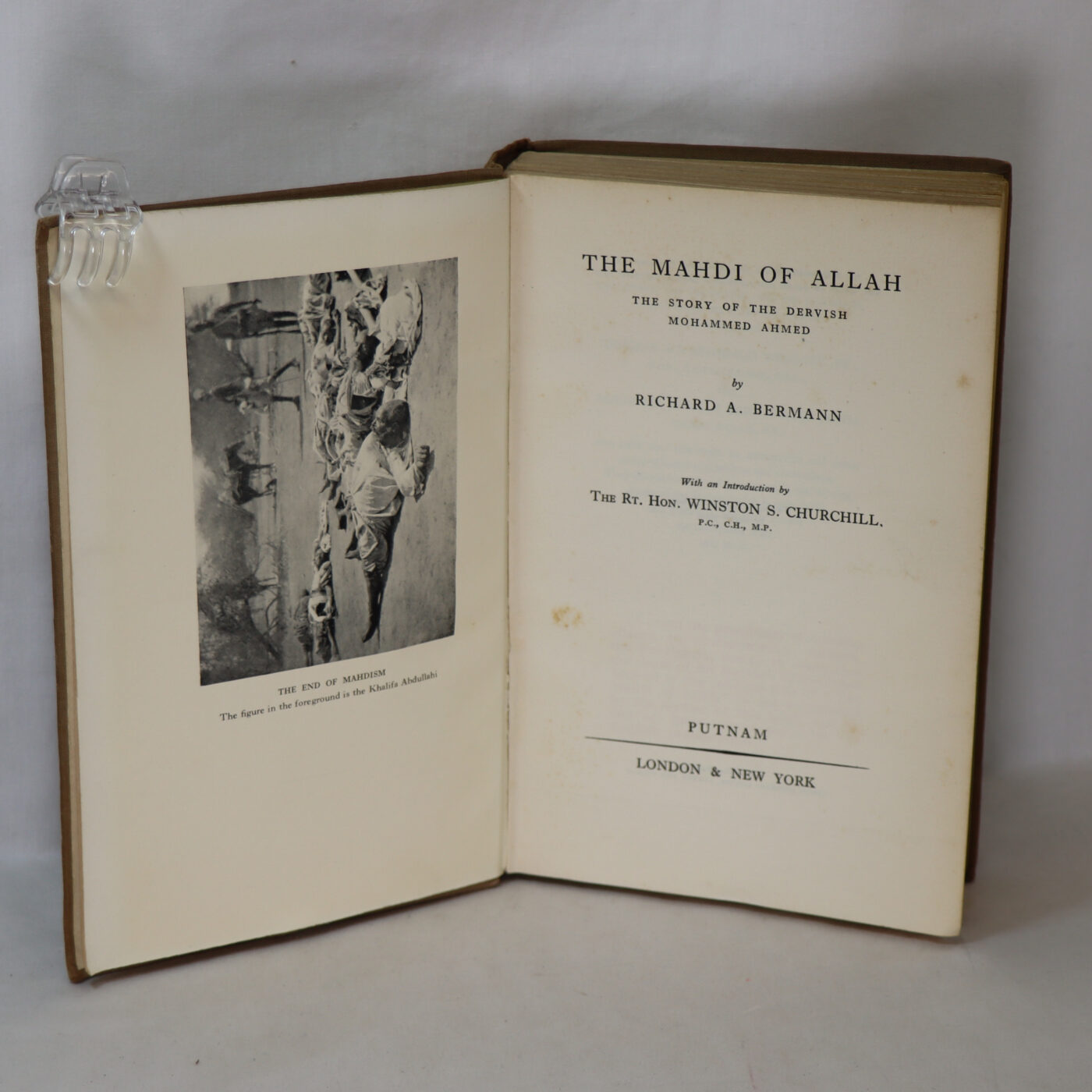
Share this Page with a friend


